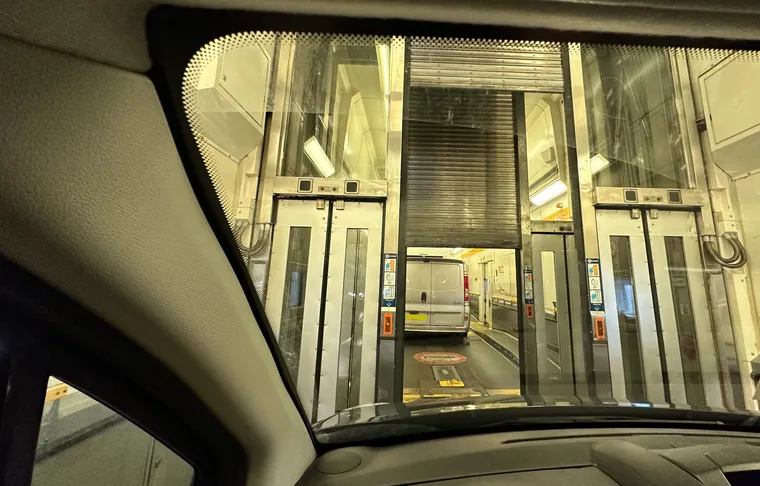You might not think that a wonder of the modern world would need a rebrand, but a glitzy Landor renaming of the Channel Tunnel’s passenger vehicle train service from Eurotunnel Le Shuttle to just “LeShuttle” last year marked thirty years of trains — including truck- and car-carrying shuttle autotrains — running through the world’s third-longest rail tunnel.
Taking your car between Calais and Folkestone through the Chunnel has always been a remarkably persuasive proposition, especially for families and people who need to travel to regional areas of France or the UK beyond places closely served by airports, who might otherwise need to cross Paris by metro with all their luggage, or rent a car on arrival.
In recent years, this proposition has got even better, but largely because of increasing prices and a lack of expansion with the competition rather than any inherent improvement in the experience.
Eurostar passenger trains have become very pricey, while the costs of air travel for a family or for a last-minute trip mount up quickly. With the rising cost of car rental in particular, being able to bring a car that you already own with you — one that, presumably, you selected to fit the needs of your family — has become even more of a plus.

If you’re driving, your options are the tunnel or the various ferry links across the Channel. And to my mind, the main reason to choose LeShuttle over ferries isn’t actually anything to do with the tunnel itself: not the speed, not the lack of seasickness, not the lack of weather delays, not the ability to pack my car to the gills with luggage limited only by how much I want to be able to see out of the back window. All of those are pluses, of course, but they’re not the big one.
Rather, the reason to choose LeShuttle is unglamorous but incredibly effective: juxtaposed border controls.
Essentially, whether you’re heading from France to the UK or vice versa, all the border formalities — passport control and customs — for both countries are carried out before you drive onto the train.
What this means is that, rather than waiting in a queue of indeterminate and often unjustifiable length on arrival, you drive off the train, up a ramp and straight onto the autoroute or motorway without stopping.
Think of it as border and customs preclearance, of the style the US operates in Ireland and a few other countries, where the US-bound flight then arrives, in effect, as a domestic flight.
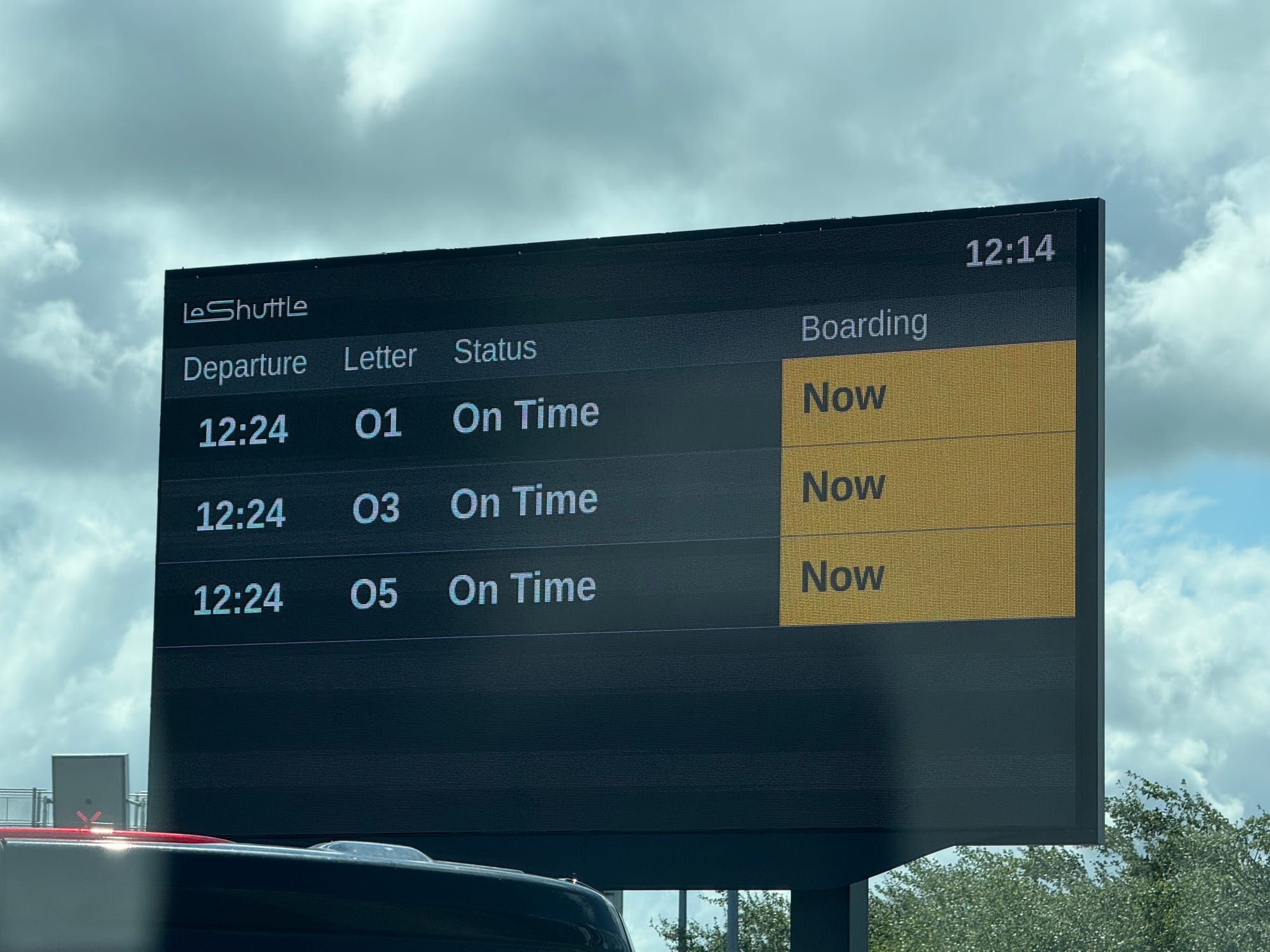
I’ve taken the ferry on practically all the cross-Channel routes over the years, and while the British side is the worst for arrival processing delays (and uncertainties), they still exist on the French side too, and I’ve sat for literal hours waiting to be processed.
While UK passport controls are juxtaposed at Calais and Dunkerque, and French passport controls at Dover, customs checks are not. In terms of travel time predictability, the port at Dover is regularly snarled by traffic in the event of various kinds of disruption, from weather (hot, cold, windy, and so on), which is unhelpful.
With the tunnel, platform-to-platform, the transit is about 35 minutes, with the tunnel section itself around 22 minutes. LeShuttle recommends an hour for border formalities, but in off-peak times I’ve glided on through in 10-15 minutes. The real timing factor here is usually passport control checks.
But this trip, with the new LeShuttle branding and backend technology fully integrated, has anything important changed?
Train choice, selection and booking are great in terms of process, but questionable in terms of demand-led pricing
By and large, booking a few weeks out has meant I’ve been able to find well-priced tickets for journeys. Booking just one day before travel in July 2025, I paid £155 for a Tuesday 13:53 departure from Calais, and £215 for a Saturday 19:54 return from Folkestone the same week, getting a Short Stay Saver Standard ticket.
In terms of pricing, LeShuttle advertises tickets “from £69”, but I have literally never found those prices. More often, a one-way ticket can be had somewhere between 100-200 pounds or Euros, depending mostly on how far out you book, with a 20-30 pound/Euro difference based on the time of day and higher prices on weekends.
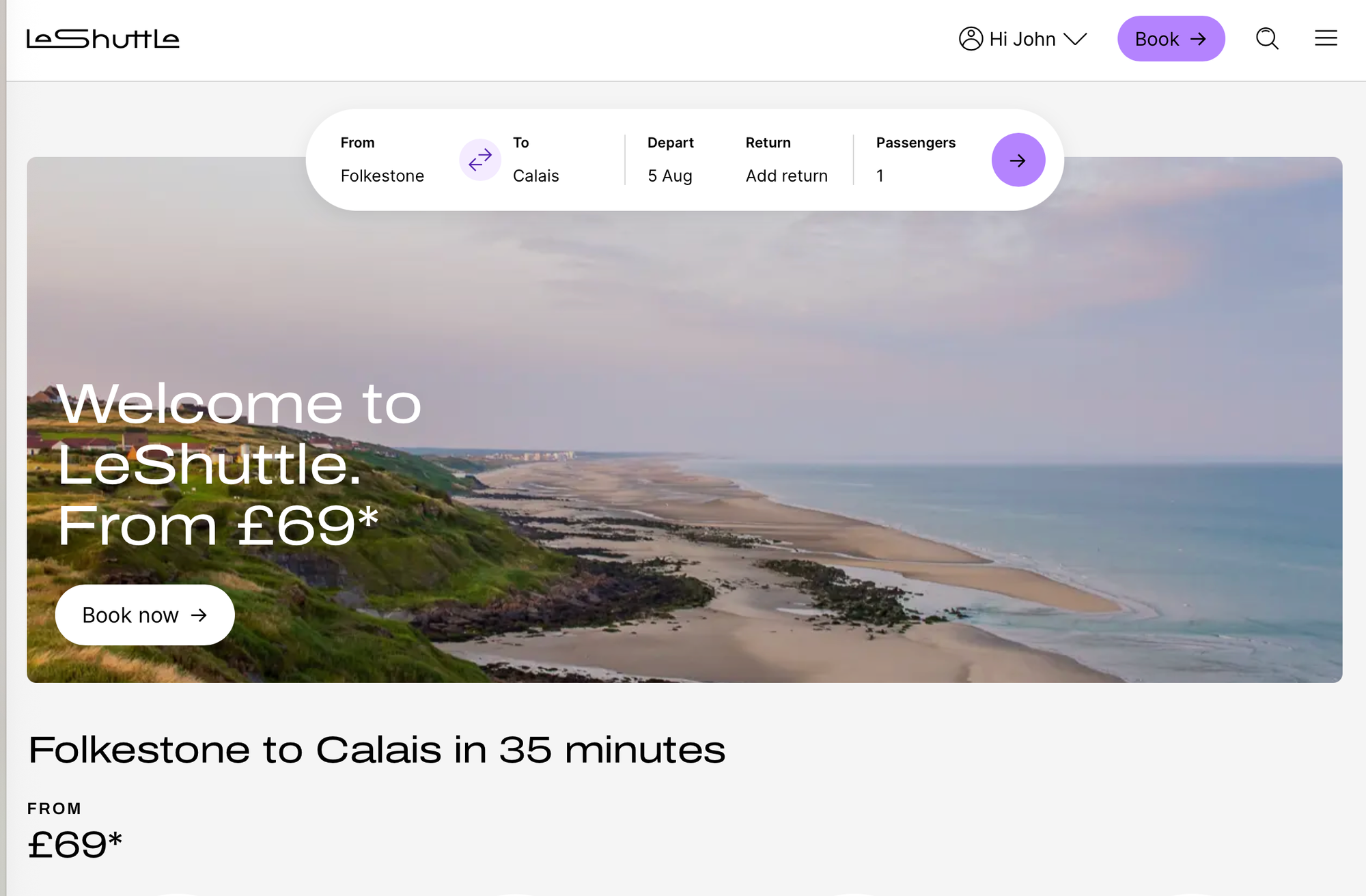
LeShuttle offers three one-way ticket types, plus daytrip and short-stay return options, with no perceptible discount I’ve ever noticed for booking a return:
- Standard, with 1-hour travel window subject to availability
- Standard Plus, with a 4-hour travel window subject to availability, and adding a refundable-for-a-fee option up to 7 days before departure
- Flexiplus, adding free booking changes, full refundability, priority boarding, and lounge access. There are also Flexiplus lanes for car checkin.
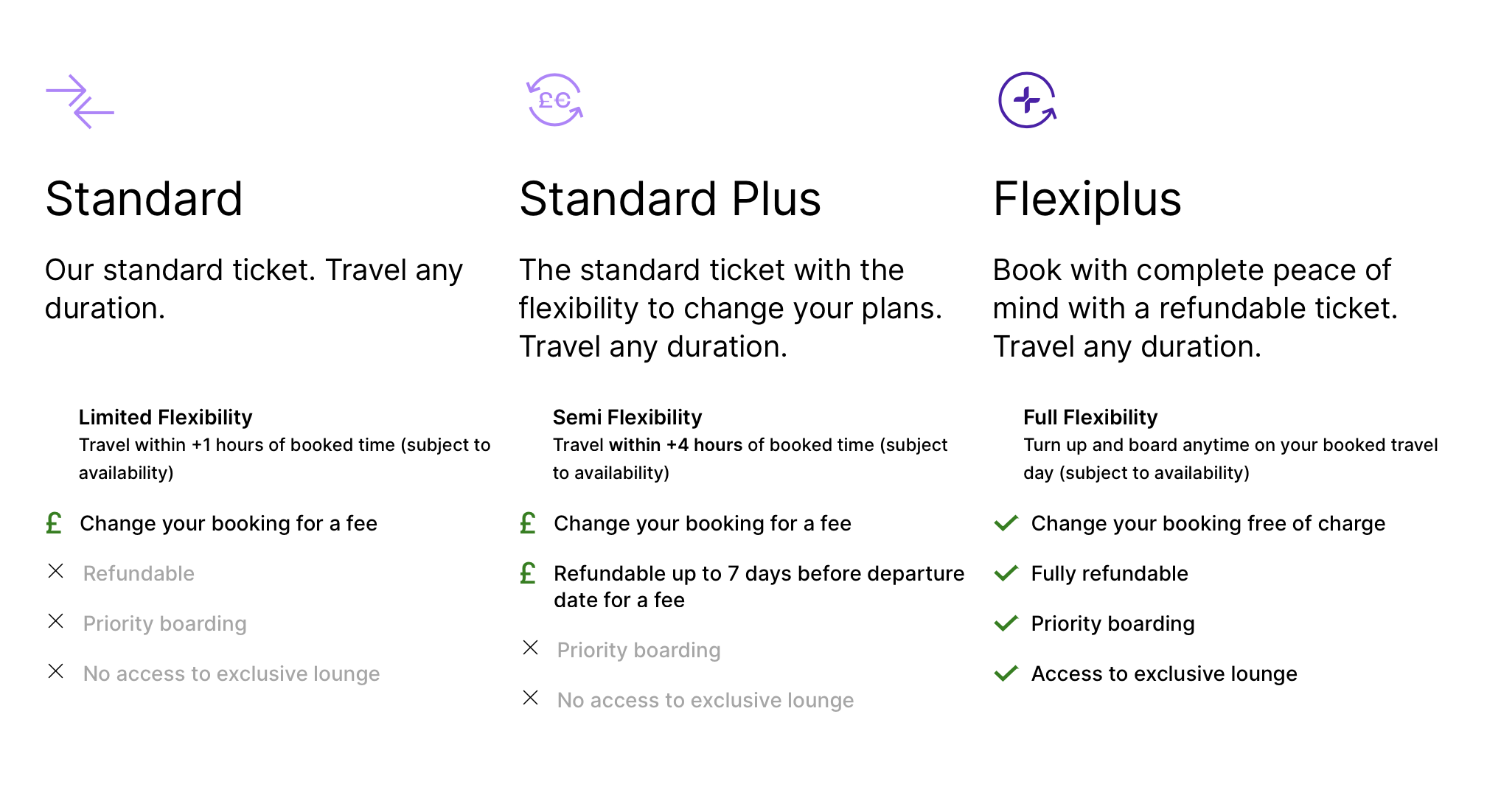
I don’t think I’ve ever bought anything more elaborate than Standard, since in my experience LeShuttle is pretty good about putting you onto the next available train if you’re early — and, reportedly, is decent about putting you onto the next available train if you’re late owing to traffic delays.
Flexiplus has never appealed: the priority boarding has never been a major draw, while the tiny lounge seems to be basically an armchair with a cappuccino machine, some iffy croissants and some sandwiches in fridge. For an upgrade cost of around £100-150 from Standard, this value proposition is questionable.
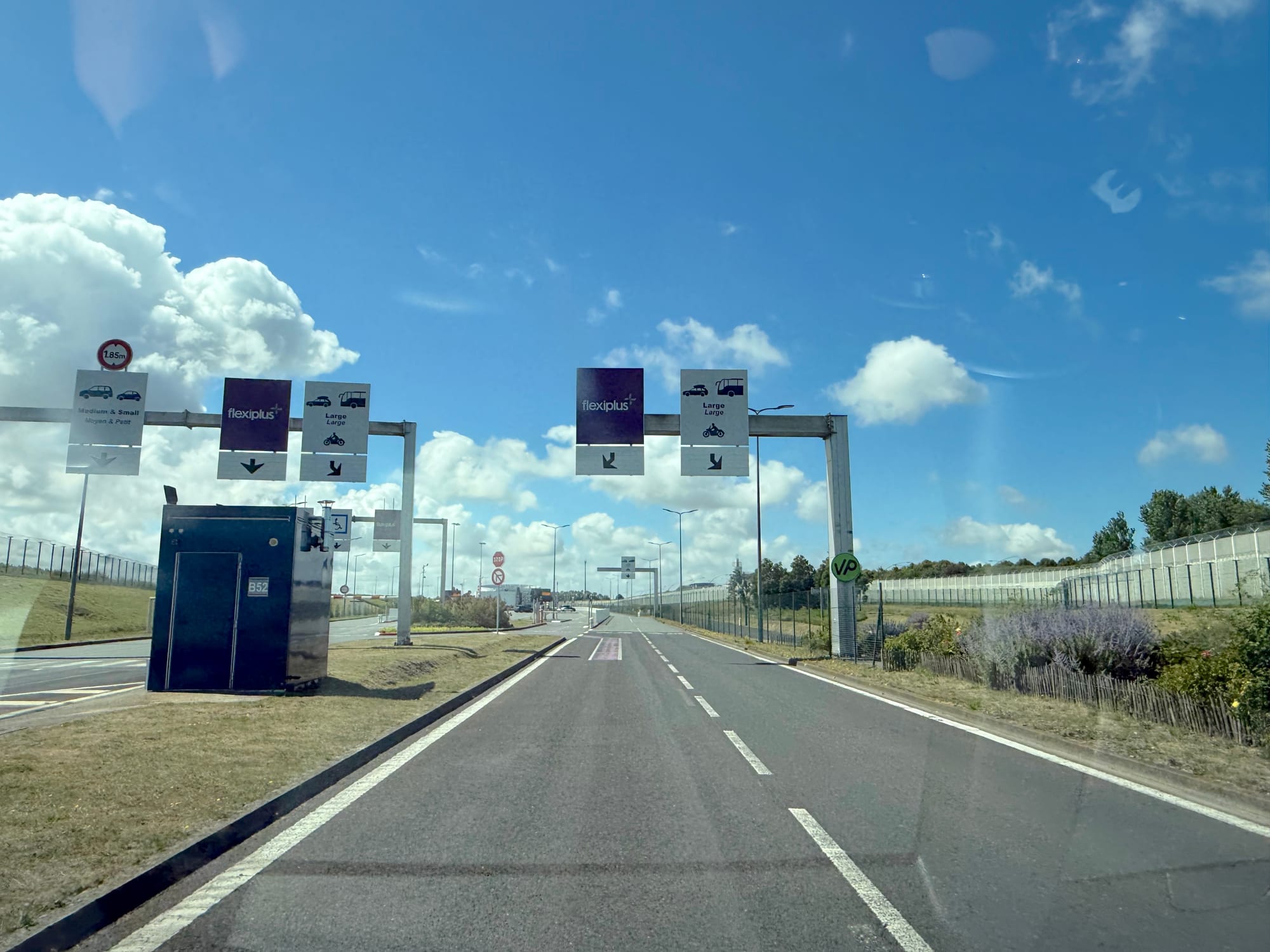
Pricing is dynamic both on day of the week, with midweek cheaper vs weekends more expensive, and on time of day, with 1200-2000 most expensive and other times of day cheaper.
Looking on 5 August at one-way tickets in early August 2025, one-way Calais-Folkestone pricing in Standard ranged from:
- today, Tuesday 5 August: £221 for any time of day
- tomorrow, Wednesday 6 August: £152 from 0000-0500 to £176 from 1200-2000.
- the weekend, 9-10 August: £195-301, with many trains sold out
- one week out: from £148
I had to go more than a month out for prices to drop to £118, and at no point up to where pricing has been loaded — June 2026 — did I find any of the purported £69 fares.
Looking into this, at the bottom of the homepage where these fare are advertised, and after having to click through to the terms and conditions, apparently this £69 fare is only available as half of a short-term return ticket: “From £69 per car one way based on a mandatory return day/overnight ticket. Must be purchased as part of a return journey within 2 days and completed by midnight local time on the second calendar day”, says the site. Even in the world of marketing swizz, this seems a bit sharp.
This pricing compares well, however, with the ferry on the nearest similar route, Dover-Calais, which takes just over 90 minutes and but doesn’t offer juxtaposed border controls. The ferry tends to be around £50 cheaper (and indeed was so on the dates I checked), but takes longer and is affected by wind and weather.
Overall, I think the LeShuttle pricing is high but remains the best deal — and it only gets better the more people you’re travelling with, because pricing is per car not per person.
However, it was notable, and disappointing, that LeShuttle didn’t seem able or willing to respond to high demand by operating more trains — even though it has been allocated substantially more capacity than it operates.
The Fixed Link Usage Annual Statement from tunnel concessionare Eurotunnel’s Network Statement [PDF, p25] allocates 4 trains per hour to LeShuttle.
Looking on Tuesday 5th for Sunday 10th August — at peak time of the year and of the week — only in the late-night 2100 hour did LeShuttle plan to operate 4 trains per hour. During some peak hours, including 1200 and 1800, only 1 train per hour was planned, with many other hours seeing only 2 trains per hour and others 3 trains per hour.
There were 0 trains planned in the hour and a half between 1554 and 1724 — even though this was such a peak period that most trains around those times were sold out Indeed, only three trains were available between 1054 and 1936, and those at eyewatering prices of over £300 one way.
There’s something wrong with the operation, management, regulation or oversight of a monopoly operator when it only uses pricing to manage demand rather than adding capacity.
Site, app, technology and personalisation: good before LeShuttle, even better now
The old Eurotunnel site was fine, but the new LeShuttle version has improved visual clarity, speed and functionality. It’s genuinely easy, quick and a pleasure to use — especially as a logged-in user whose vehicle details, API (advance passenger information) and card information are all stored.
Quite impressively, the system knows that my vehicle — a Citroën Berlingo minivan affair — is higher than the average saloon car so is designated a Large vehicle. This means I’m automatically allocated a spot in the single-floor carriage rather than the double-floor carriage.
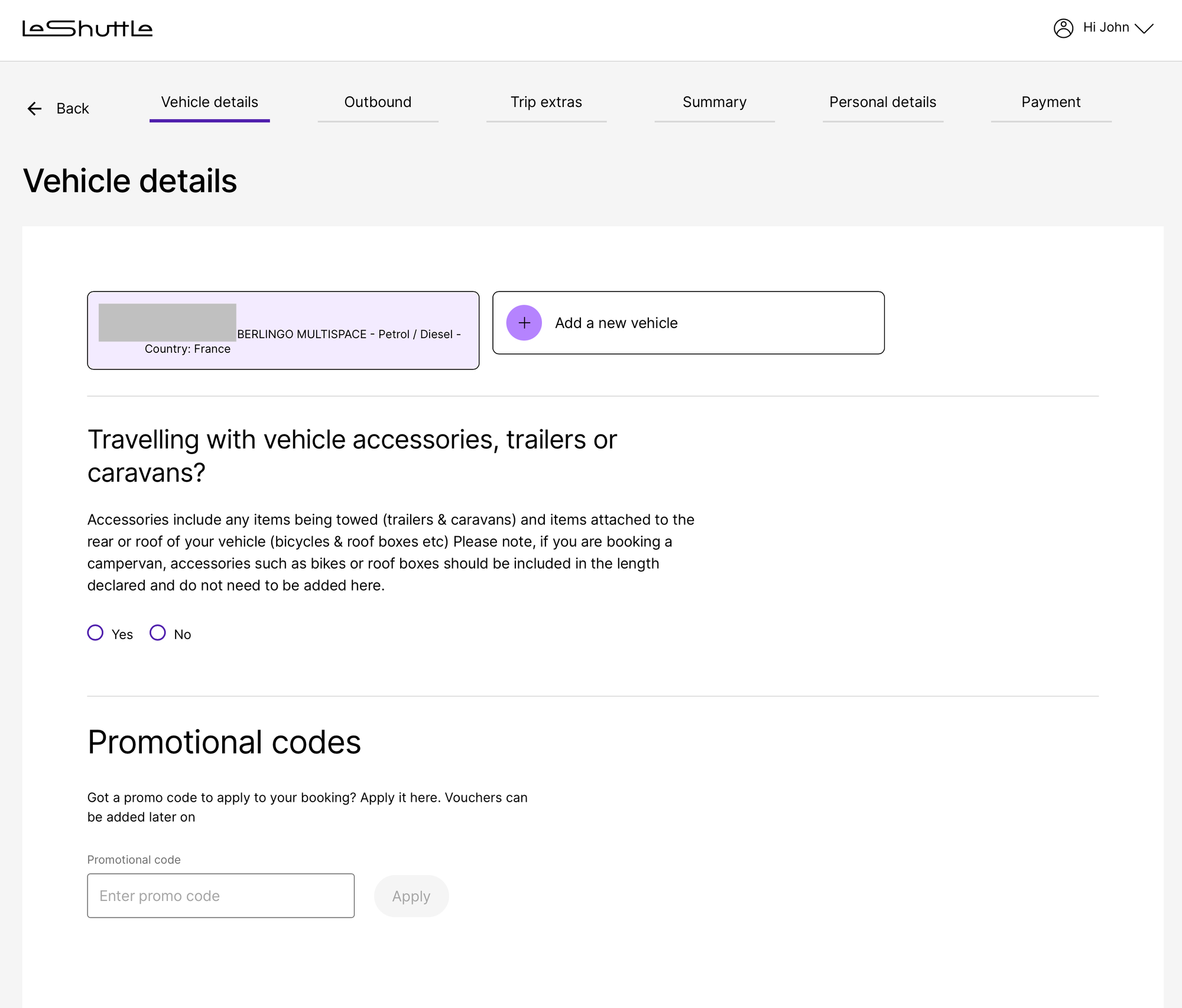
I’m of that Millennial generation where, as the joke goes, big purchases like trips are done on the big computer screen, and I’d never even downloaded the LeShuttle app onto my phone until I went to see what it was like for this review. But it seems very similar to the website, which is good both because of consistency and because the website’s a good one.
You can now also collect Avios, the frequent flyer currency originally from British Airways and now used by its IAG group and a number of other airlines including Qatar Airways and Finnair. Earning rates are 3 Avios per pound in Standard and 6 Avios per pound in Flexiplus. You can also use Avios to buy money-equivalent vouchers (in £5 for 1000 Avios increments) to purchase LeShuttle tickets, which doesn’t feel like great value.
Most of the LeShuttle experience is in the departures area, and hasn’t really changed
LeShuttle doesn’t have stations like other train services do, perhaps obviously, and indeed you can’t take it as a passenger without a motor vehicle: for that, there’s Eurostar.
Instead, it has a road-based network departures areas at each side of the tunnel, which comprise:
- a check-in area, which rather resembles a toll plaza, with automated booth touchscreens that print a boarding card equivalent hangar for your rear-view mirror
- a terminal with parking area that’s a bit like a UK motorway services plaza plus a duty-free shop
- the border check area with departure country and arrival country checks, plus security/biosecurity checks at each that seem random or purportedly random
- a queueing area for cars prior to boarding, with a small lavatory block and vending machines — plus a small separate lounge building and queue for Flexiplus ticket holders
- the elevated bridges and ramps to and from each of the half-dozen or so boarding platforms
This all works very similarly no matter what side of the Channel you’re on, at least for now. The detail may well change as new electronic passenger processing systems come into play in the UK and Europe’s Schengen Area single immigration zone if, for example, passengers need to be photographed and fingerprinted.
Given the structure of the journey, the majority of most passengers’ time is taken up on the ground in the departures zones, and indeed that was the case on both my UK-bound and France-bound trips this time.
Checkin: swift and easy, like a tollbooth with a touchscreen
Rolling up to the tollbooth-style checkin areas, I aimed for one of the lanes clearly signed as having the touchscreen on the left, given that my French car is left-hand drive. Right-hand touchscreens (for right-hand drive vehicles, mainly from the UK and Ireland here) are also available, in roughly a 50:50 split.
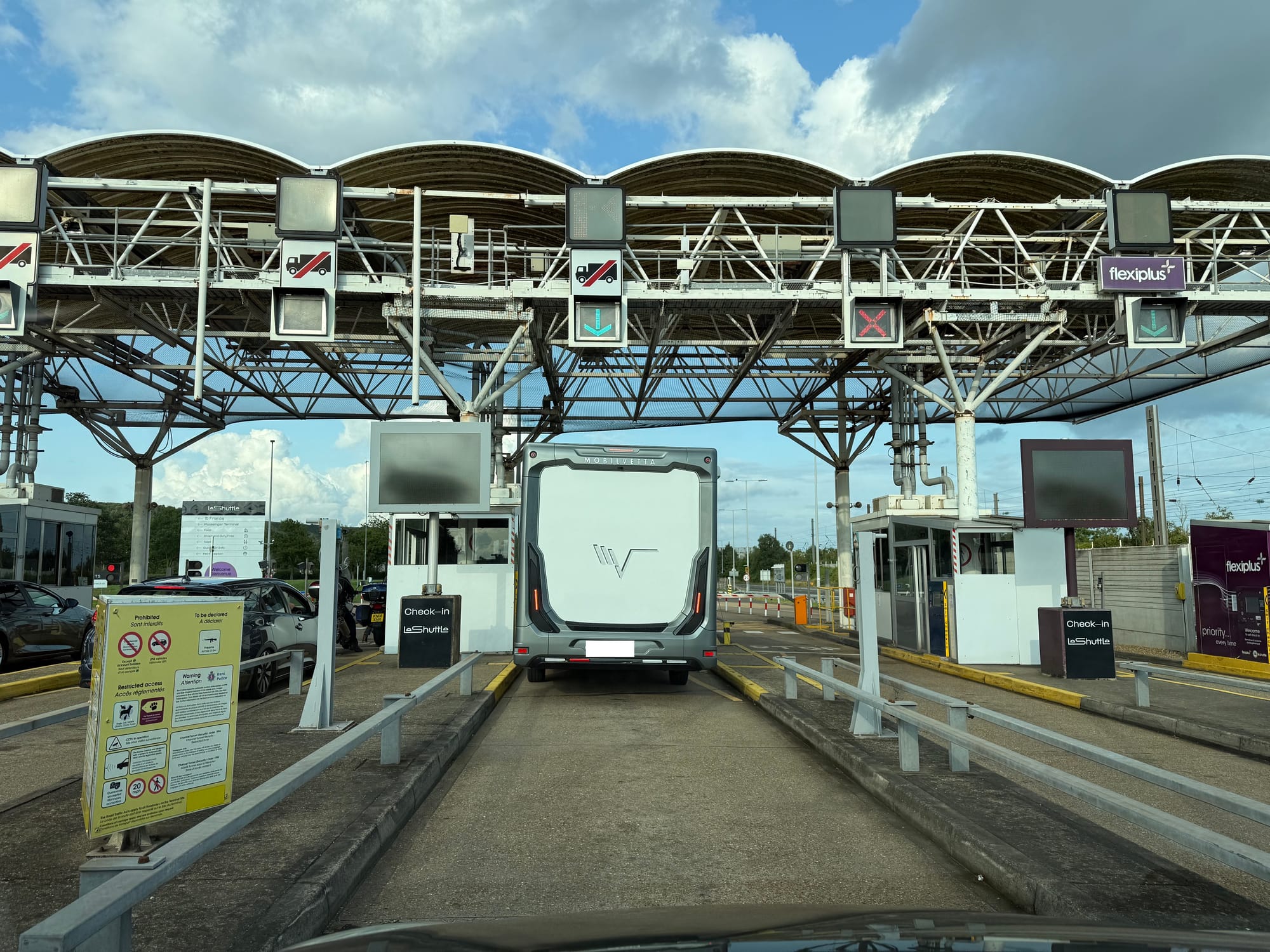
On both trips, I arrived a couple of hours before my booked time, and was able to pull forwards my departure on my Standard tickets by an hour or two. Sometimes the screen demands a supplementary fee if you pull yourself forwards by a longer amount of time, but I’ve never had a problem simply choosing the earliest free slot and then simply heading through the border process early. They always seem to just slot you into the next available train anyway.
After tapping through a few safety questions (such as what sort of fuel your car uses, whether you have any pets or explosive gas cylinders, and so on) the check-in booth spits out the boarding pass equivalent, a cardstock hanger for your rear-view mirror with an allocated train (R3, N5, or similar) and boarding time. You then drive off towards the terminal nearby.
No real change here with the LeShuttle rebrand: everything apart from some of the signage is as it was when it was still Eurotunnel Le Shuttle.
Terminals: all the basics, but that’s it
The terminals on both sides are very similar, and resemble nothing quite so much as a small British motorway services area. There’s a parking area with electric car chargers, then an ugly modern building with lavatories, a WH Smith newsagent, a Starbucks, and one fast food option: a Leon (in the UK) or the world’s slowest Burger King (in France).
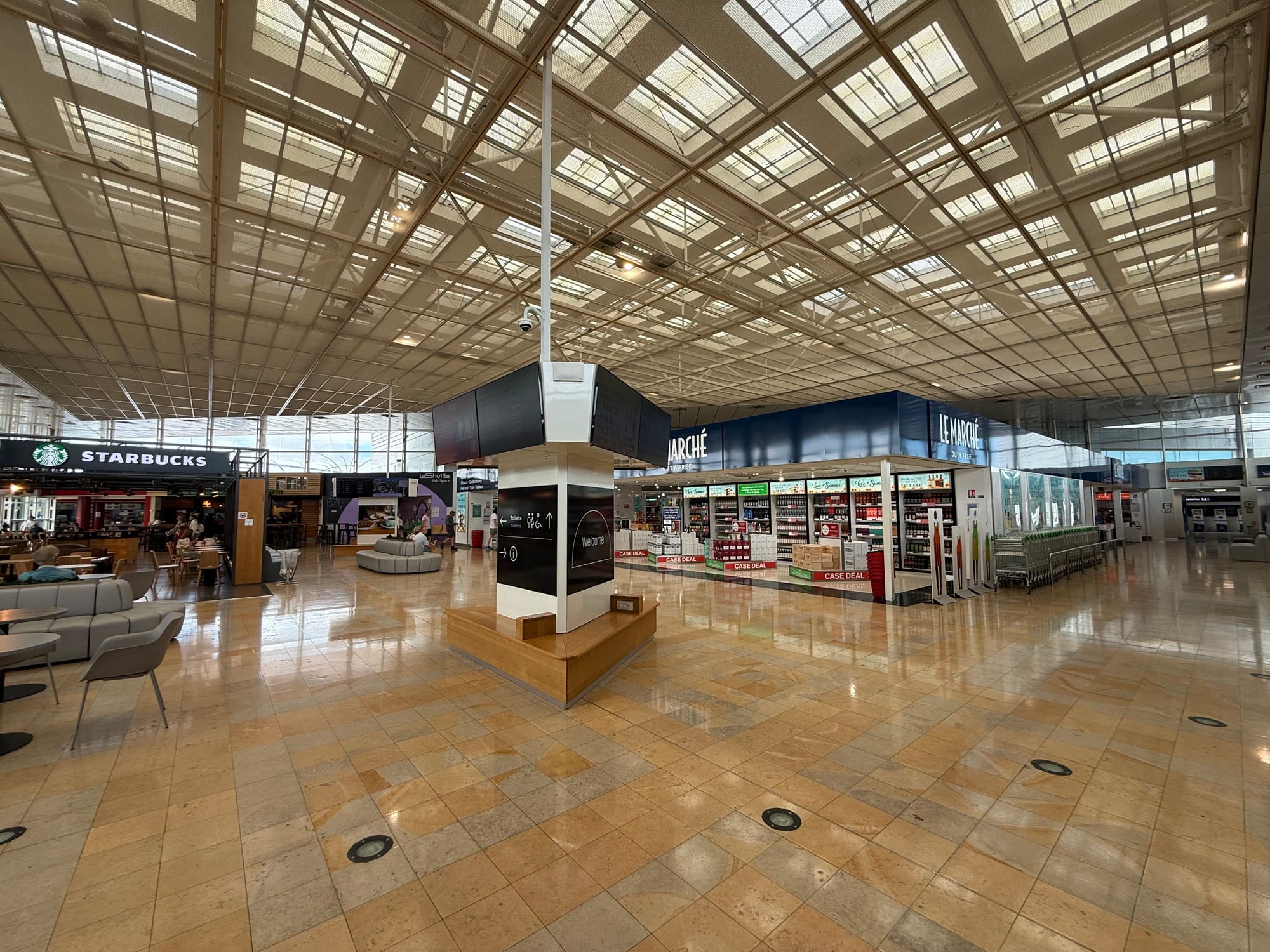
The only unusual element is a duty free store, which is, at least, not a mandatory airport-style labyrinth. This is very average, with keen pricing on cigarettes and enormous Toblerones that will start melting happily the moment you put them in your car on a summer’s day.
There’s also a weird quirk when you come to pay: the system wants a QR code from your booking confirmation. Not the QR code from the boarding pass hanger that you’ve just been given, mind — the one from an email lurking on your phone from however many months ago you booked your trip. One might think that with the booking reference code (printed on your boarding pass hanger) they might be able to look you up, but no.
In any case, once you’ve loaded up on your allowance of cheap ciggies and unwieldy formats of mediocre chocolate, you’re then notionally called forward to proceed through the border process formalities, usually around an hour or so before your departure. None of this has really changed since the LeShuttle rebrand, although the signage looks a bit more modern.
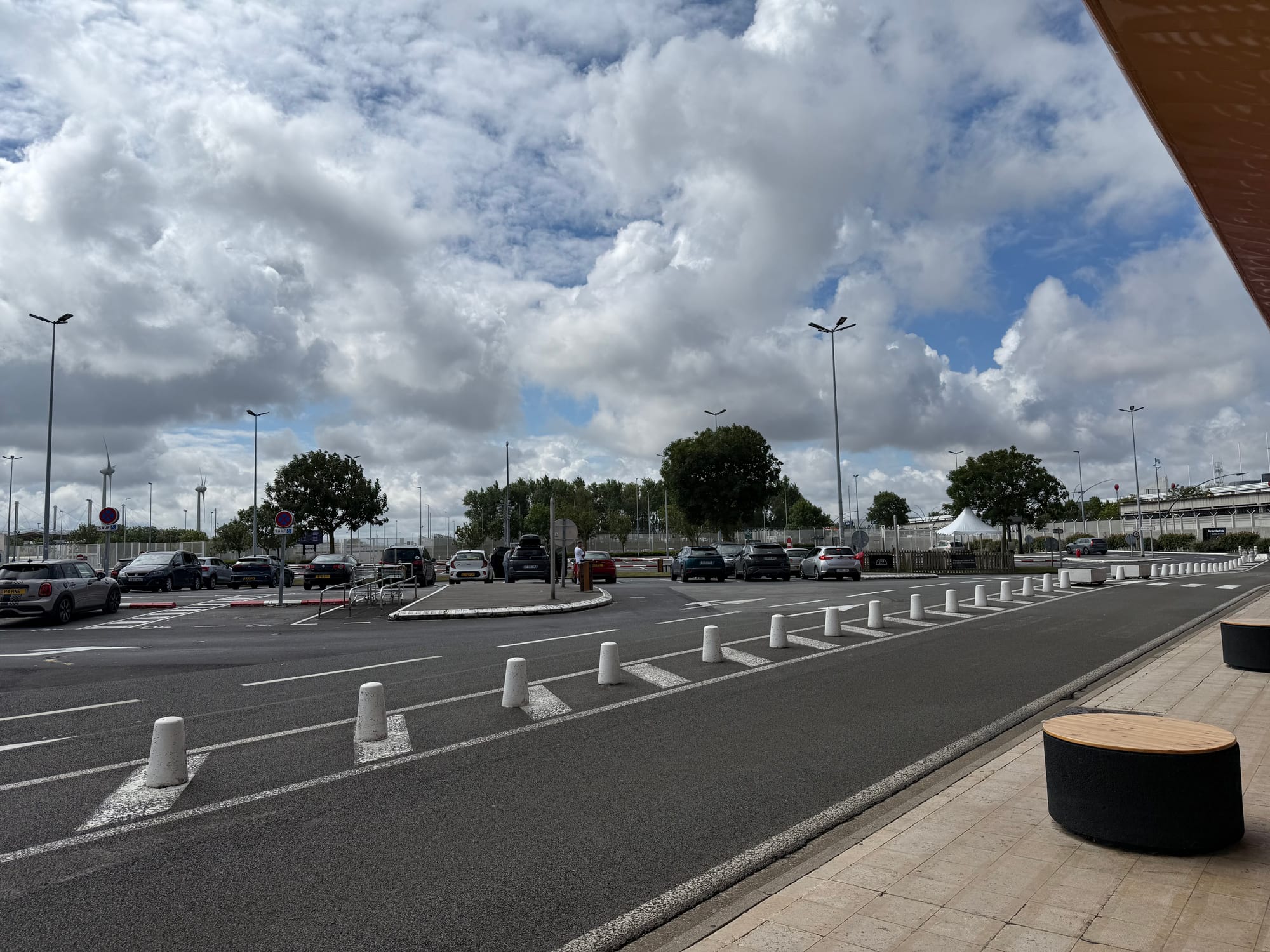
In the most annoying part of the process, you have to drive through the entire rest of the parking lot one-way system, which is an airport-style labyrinth. Previously, this was a temporary system with those red-and-white plastic Jersey barriers, but concrete has now been poured and roads painted to make it permanent.
I presume this is to allow for a truly British level of queueing at peak periods, but I have never in nearly a decade of using the tunnel needed to queue that much, and it’s not clear why it couldn’t be executed using a temporary barrier during peak periods extending the path, with a much shorter and less pointlessly irritating route for the vast majority of the time.
Border checks: easy and swift, from the comfort of your car… for now
Both sides of the border function the same: there are departure country booths and then arrival country booths, separated by a hundred metres or so of queueing space.
Essentially, you queue in your car for a departure country booth, hand over the passports and any other travel documentation of everyone in the car, and answer any questions (usually none in my experience). Oddly, this procedure also happens on departure from the UK, a country that does not have any similar departures formalities at airports.
After the departure country booth, you may then be funnelled to a security check area for one or more of a vehicle scan, a swabbing of your hands and various parts of your vehicle. This seems to be fairly random, and I wasn’t selected on either way this time.
You then queue in your car for an arrival country booth, which is the real benefit of taking the tunnel over the ferry. With the ferry, arrival procedures are after arrival, and add to your journey time rather than taking place while you’d otherwise be waiting to board.
The checks are very similar at both booths, though usually with a few more questions along the “where do you live, why are you coming here” sort of thing. You may also be funnelled to a customs check area, which I’ve never experienced, but I’ve seen UK-bound people with their cars full of goodies (presumably from an infamous booze-cruise trip) pulled over for checks.
I presume that passengers will have to leave their car and proceed somewhere nearby to be fingerprinted and photographed for the new generation of biometric customs processes, but nothing was visible for these requirements when I travelled.
If the authorities end up making things work the way they did during COVID travel restrictions — when you presented all your paperwork to a series of exasperated workers in a small office at the terminals — that would seem to be the least disruptive.
Boarding queues and process: swift and sensible, if not exactly the stated policy
Once you’re past the border, you approach another booth to be allocated to a boarding lane, where you park temporarily and await the barrier to raise for you to proceed.
These lanes are split up into Small/Medium and Large vehicle lanes in order to queue for boarding into the double-decker Small/Medium or single-decker Large carriages, respectively. (Flexiplus ticket holders go into a separate parking area with their little Flexiplus lounge hut and can board at their leisure.)
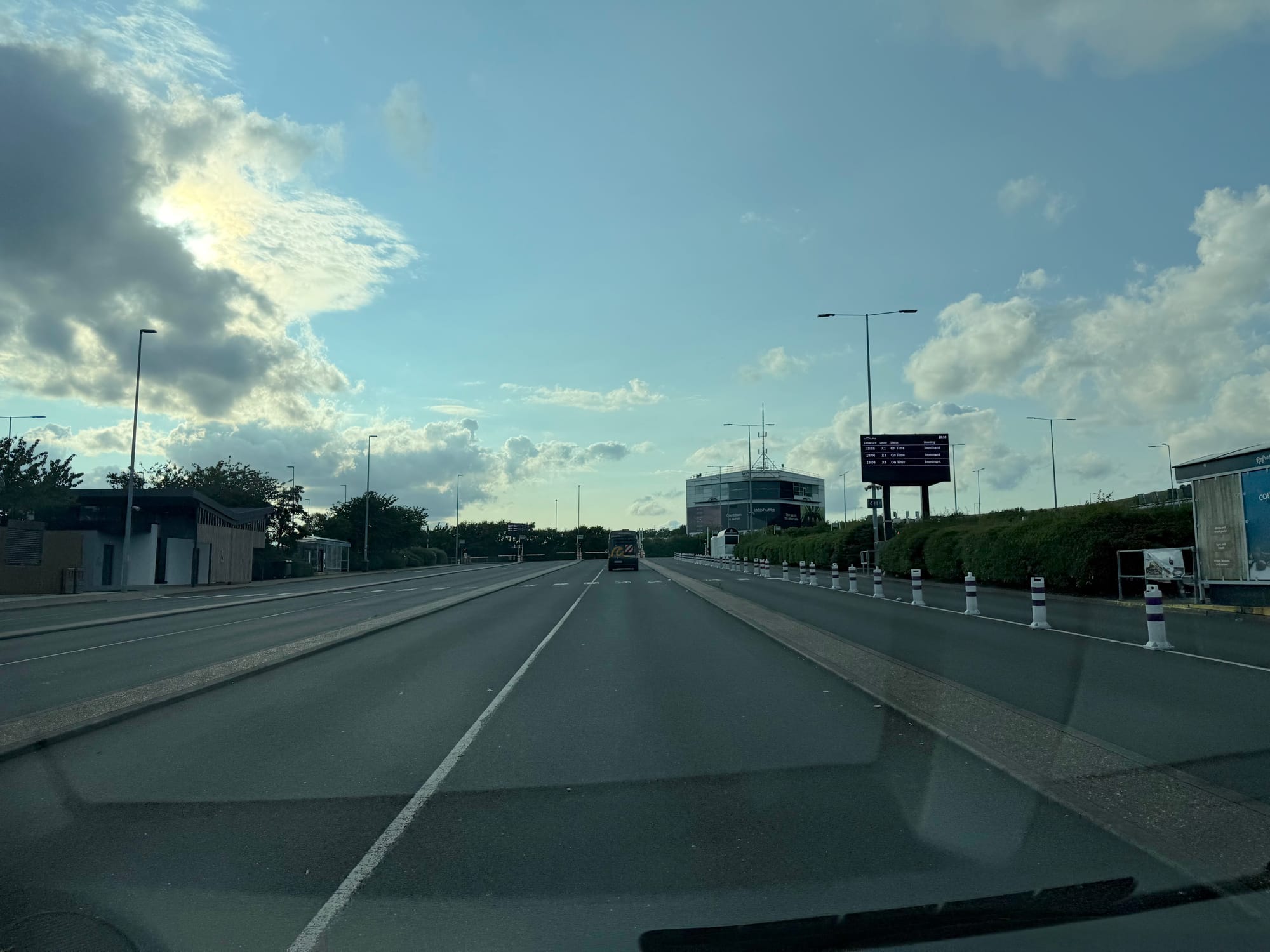
On both legs of this return trip, the queueing area was almost entirely empty: UK-bound, I waited perhaps five or ten minutes at the front of the queue, while France-bound, the barrier was up and I drove straight onto boarding. Except on really, really busy days, this has always been my experience.
If you are here for longer, there’s a small very basic lavatory block — recently refurbished, and not before time — and some vending machines, but that’s about it. This is a change to stretch your legs and get a bit of fresh air near your car, but there’s no sit-down area with picnic space or anything.
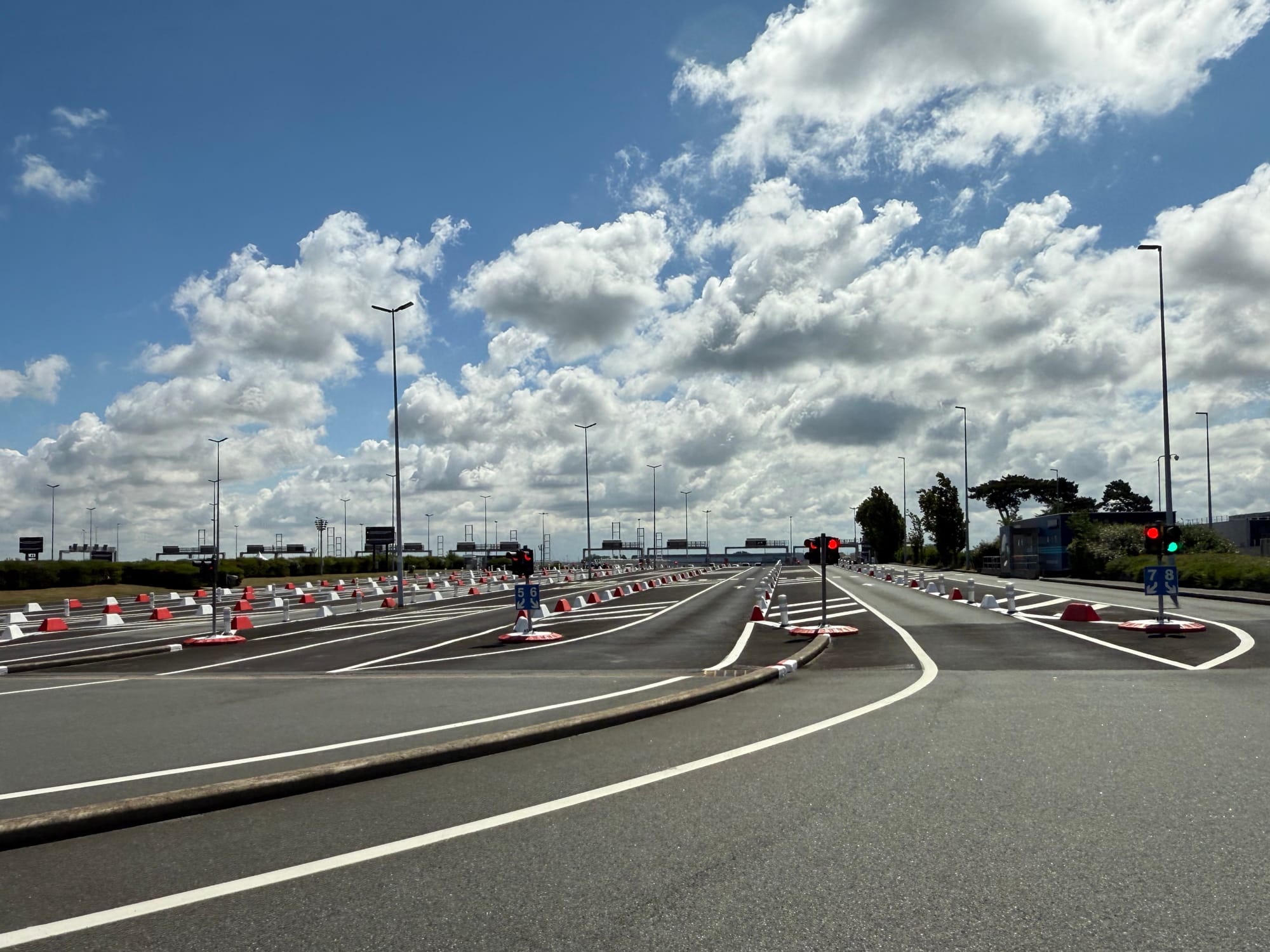
There’s a screen with your train and departure time on it, which has only a slight resemblance to reality: there’s little update or useful information if anything changes, and in the past I’ve been in the situation of a rolling delay where the board just keeps incrementing every departure by 20 minutes or so.
On boarding, the tollbooth-style barrier raises, the light turns green, and you follow the arrows to whichever platform your train is on.
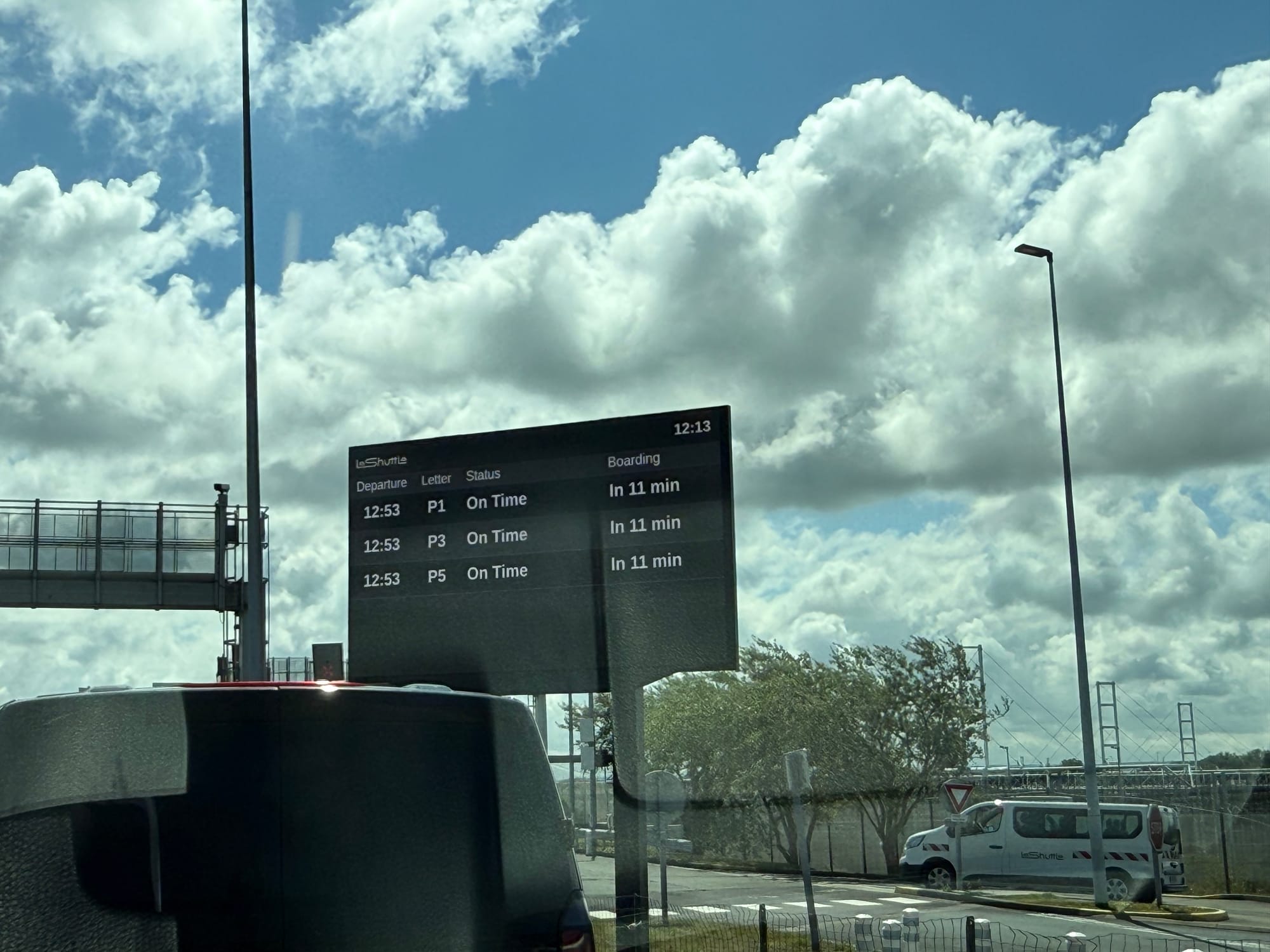
Getting — and travelling — on the autotrain shuttle is remarkably simple
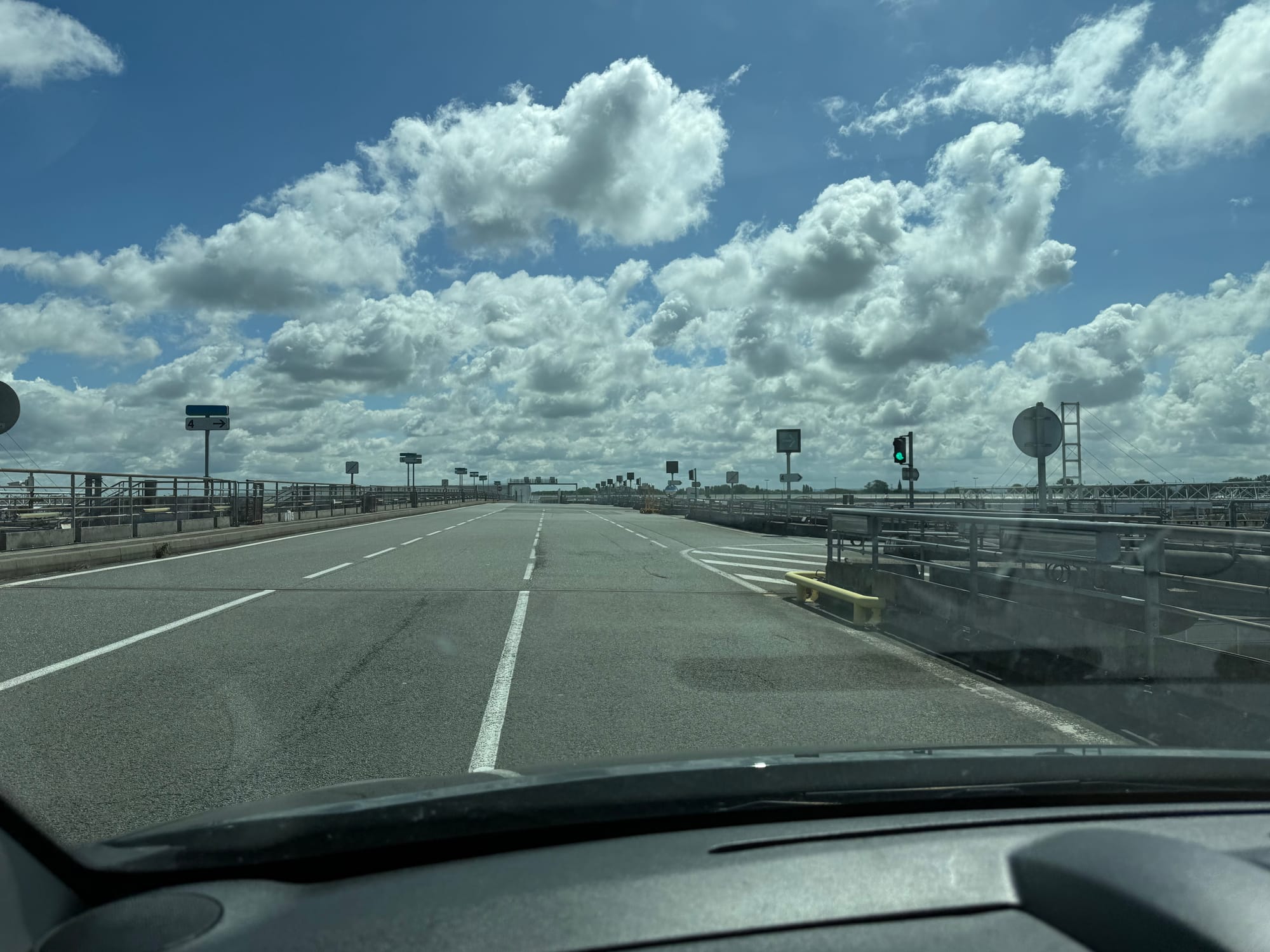
Each train is split into two sections, partly double-decker carriages for Small/Medium cars and partly single-decker carriages for larger vehicles like minivans, SUVs, campervans and so on, or those with special requirements: gullwing doors that couldn’t open in the double-decker areas, low-slung sports cars that would scrape themselves going up the ramp, motorcycles, or adapted vehicles used by disabled people requiring extra space to access, and so on.
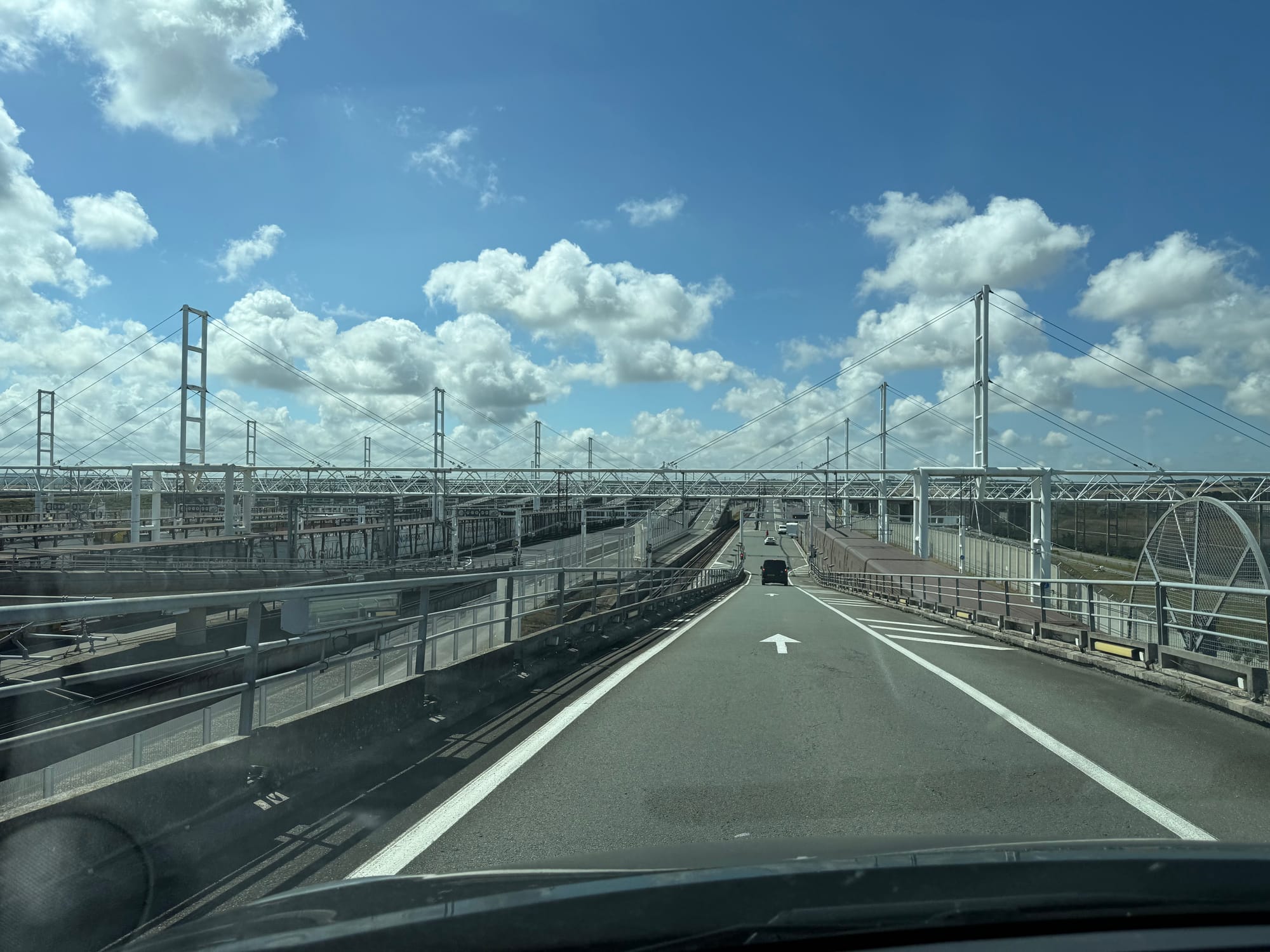
The boarding process is the same for each section, though, and you drive down the ramp from the elevated bridge and are directed onto the boarding car, then drive through the entire section of the train until a staffer waves you forward to park you. (If you’re in a small/medium car and are sent to the top deck, you drive up the internal ramp in the rearmost vehicle of that section.)
Emergency handbrakes must be on, and the car must be left in gear, in order to avoid rolling forwards and/or backwards from the tunnel — and you’re told not to walk between the cars to avoid being crushed if that were to happen.
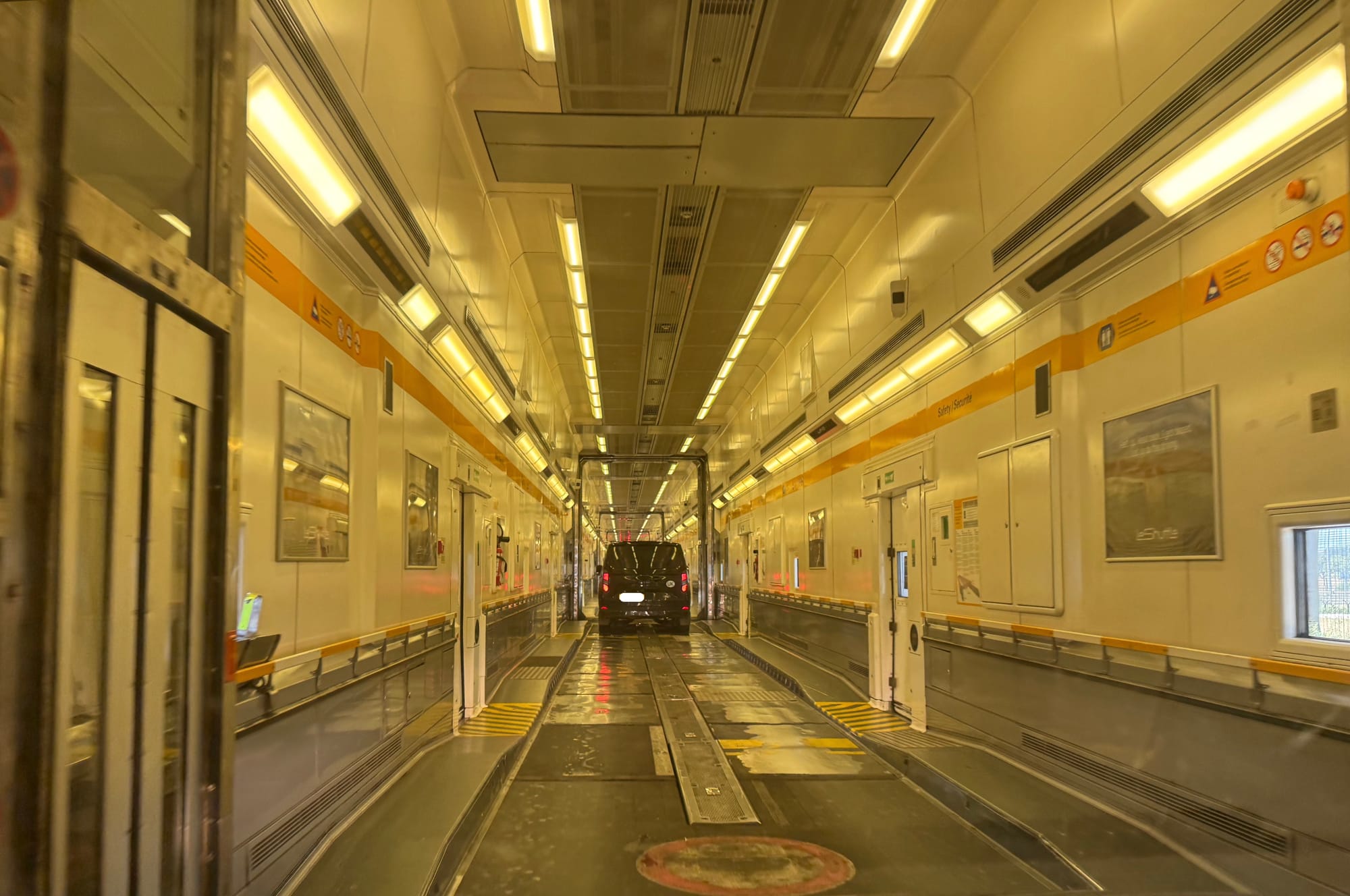
You’re told to leave sunroofs and windows open, for the fire suppression system, as I understand it, and the fire doors between the carriages close. There are small, train-style lavatories on board, but whether they’re operational is another matter.
Apart from that you sit in your vehicle as normal, and the only sign that you’re in one of the world’s longest tunnels is that the daylight from the few tiny windows blinks out shortly after the train starts slowly moving.
Throughout the journey, there’s 4G cellular signal, which works well: I’ll often put on a YouTube video while I recline my seat for a snooze, and the connection is solid to pull down whatever I’m watching.
After just over 20 minutes in the actual tunnel, the train pops out on the other side of the Channel, and you then drive off the train, up the ramp and onto the exit road.
Prior to arriving on either the French autoroute or British motorway, there’s a small slip road onto a small petrol station area with attached shop, both of which faintly extortionate motorway prices.
But apart from that, you’re on your way without having to stop for anything — and especially not any immigration queues.
Overall conclusions: LeShuttle is still a really convenient and flexible experience, even with the odd demand pricing situation
The value proposition of the Channel Tunnel car shuttle remains its speed, flexibility (advertised and not advertised) and the juxtaposed border formalities. In terms of pricing, the per-car ticket cost only becomes more attractive the larger the family or group of passengers in the car gets, particularly compared with rail or air.
Compared with its closest ferry competition, the speed and reliability of the tunnel are worth the extra £50 or so. But LeShuttle should be cautious about how it balances passenger demand, schedule supply and pricing. It’s a bad look to operate less than half the slots allocated while selling out trains and hiking prices on those trains that aren’t yet sold out.
This article was updated on 12 August 2025 to note nuance that Calais, Dunkerque and Dover have juxtaposed passport controls but not customs checks.

